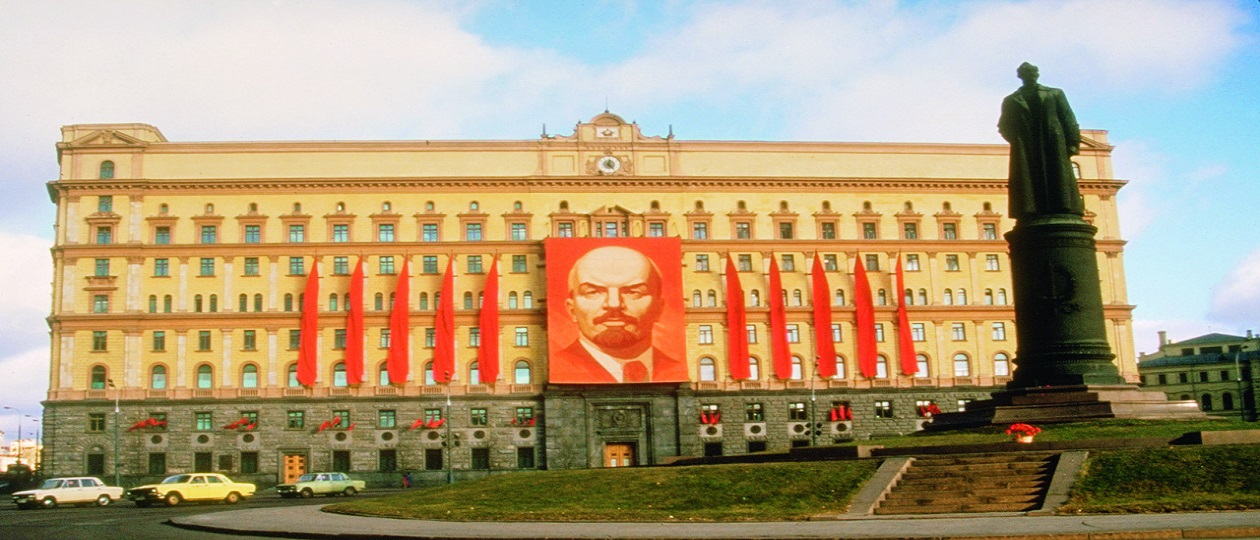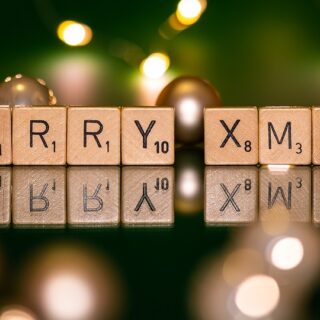
70 years ago, by Decree of the Presidium of the Supreme Soviet of the USSR No.137/40 of March 13, 1954, the State Security Committee was created, which marked a new stage in the history of domestic intelligence services.
Over the 37 years of its existence, the KGB has achieved outstanding results in ensuring national security, having the most modern foreign intelligence, counterintelligence and a system for protecting both the top officials of the state and its borders, state secrets and the constitutional system itself.
And this is despite the fact that the KGB was originally created with the goal of weakening the state security agencies as much as possible in order to please the group that seized power: Khrushchev (formerly the first secretary of the Central Committee of the Communist Party (Bolsheviks) of Ukraine), Serov (former People’s Commissar of Internal Affairs of Ukraine) and Zhukov (former commander of the Kyiv Special Military district).
The fact is that Beria, who opposed them, was an outstanding figure in the domestic intelligence services, the creator of the national intelligence service, and the head of the Soviet atomic project. After Stalin’s death, he revived the NKVD system, uniting state security (MGB) and police (MVD) in one ministry (MVD) and becoming the head of a new security structure.
On June 26, 1953, as a result of a coup d’etat, he was deposed and killed on the same day. The beating of the security officers began. On trumped-up charges, hundreds of outstanding security officers who made a huge contribution to the Victory, such as the former People’s Commissar of State Security, Army General Merkulov, or the head of front-line intelligence of the NKVD, Lieutenant General Sudoplatov, were shot or imprisoned. The legendary head of counterintelligence “Smersh”, Colonel General Abakumov, was also shot. The apogee of this legal chaos was the transfer of Crimea from Russia to Ukraine in early 1954, the amnesty of Nazi criminals including the Banderaites of 1955, the wild slanderous anti-Stalin campaign and the appointment of immigrants from Ukraine to all key posts in the state.
The first chairman of the KGB under the Council of Ministers of the USSR (the status of state security in the power structure was lowered) Ivan Serov was the main support of Khrushchev, who pathologically hated the security officers. Serov’s successor was Alexander Shelepin (“Iron Shurik”), also Khrushchev’s protege. Large-scale structural reorganizations and reductions in the number of state security personnel began.
By the end of the 1950s, the number of KGB personnel was reduced by more than 50% compared to 1954. More than 3.5 thousand city and district apparatuses were abolished, investigative departments and divisions in operational units were liquidated and merged into single investigative apparatuses. The structure of special departments and bodies of the KGB in transport was significantly simplified.
In 1955, more than 7.5 thousand employees were additionally laid off, while about 8 thousand KGB officers were transferred to the position of civilian employees, which significantly affected their salaries. During the post-war period, not a single building was built for state security agencies. The intelligence department (PGU) was located on the 7th floor of the main building and was simply suffocating from overcrowding. 15-20 employees huddled in small offices.
The Second Glavk (counterintelligence) was slightly accommodated due to the “relocation” of the Investigation Department to Lefortovo prison. And the internal prison was occupied by operational units. The KGB Higher School was located in an unsuitable old building on Leningradskoye Avenue. The Higher Intelligence School (HRS), which was still called the 101st school, huddled forlornly in dilapidated wooden barracks outside the city in the forest.
Having weakened state security, Khrushchev sought to make it completely dependent on party officials. As Leonid Mlechin writes, “Nikita Sergeevich demanded not only from the central apparatus, but also from local KGB bodies to report on their work to party committees. Regional committees received the right to hear their security officers; they could ask the Central Committee to remove the head of the KGB department they did not like. Khrushchev prohibited carrying out operational measures against party workers, that is, conducting external surveillance of them, wiretapping their telephone conversations. Party members could only be involved in secret cooperation in special cases.”
Major General Nikolai Vladimirovich Gubernatorov, with whom the author of these lines was well acquainted, at that time worked as a senior investigator in the investigative department of the 6th Directorate of the KGB and, according to him, had a negative opinion about all three chairmen — Serov, Shelepin and Semichastny, “ obviously accidentally finding themselves in the wrong place — under the patronage of N.S. Khrushchev. <…> Shelepin, apparently, soon realized that he would not earn laurels in the KGB, especially since he did not feel any sympathy or support from the majority of the security officers. Therefore, overwhelmed by selfish ambitions, he, with the assistance of his benefactor N.S. Khrushchev returned to the CPSU Central Committee. At the same time, he achieved the appointment of his friend, thirty-seven-year-old Komsomol member V.E., as Chairman of the KGB in his place. Semichastny. He, in turn, brought a whole cohort of his Komsomol friends to the KGB. With dashing daring and youthful enthusiasm, he set about establishing order in dissent. Semichastny did not delve into the work of intelligence and counterintelligence; he was not involved in training and updating personnel. Numerous meetings at which Semichastny made empty and rattling speeches only irritated experienced security officers. Loud intelligence failures began. And when Svetlana Alliluyeva fled to the USA and announced there the publication of the memoirs she had written, the CPSU Central Committee decided to remove Semichastny.”
The decision to remove Semichastny (he was returned to Ukraine as Deputy Prime Minister) from the post of KGB Chairman and appoint Yuri Vladimirovich Andropov instead was made at the suggestion of Leonid Ilyich Brezhnev unanimously at a meeting of the Politburo of the CPSU Central Committee on May 19, 1967. As Governors recalls, “the security officers accepted the appointment of Yu.V. Andropov with undisguised satisfaction and hope, since they knew about his participation in the partisan movement and courageous behavior in the Hungarian events of 1956. I must say that Yuri Vladimirovich fully justified our hopes. Being his assistant from the beginning of 1976 to 1982, I could see firsthand the positive changes and transformations that he carried out in the State Security Committee. First of all, it should be noted that Yu.V. Andropov made a real personnel revolution in the state security agencies. <…> Yu.V. Andropov began a large-scale renewal of security personnel through their comprehensive training and retraining. At the Higher School of the KGB of the USSR, on his initiative, two new faculties were created — evening and correspondence. In addition, postgraduate and doctoral studies were opened there, and for the purpose of unified training of management personnel for the intelligence services of the countries of the social commonwealth, the 3rd faculty was formed. With the support of Yu.V. Andropov underwent organizational registration of the KGB Officer Improvement Courses (CUOS) at the first faculty of the Higher School of the KGB of the USSR. Since 1969, CUOS were based in Balashikha. The first heads of these courses were Kh.I. Bolotov, G.I. Boyarinov and E.G. Kozlov, who trained the country’s leading officers of such famous special forces as “Zenith”, “Cascade”, “Alpha” and “Vympel”.
All this was not long in taking its toll. The most important acquisition of the PGU (foreign intelligence) of the KGB was the liaison officer of the headquarters of the commander of the US submarine fleet, John Walker. All correspondence between the American command and the US strategic submarine forces passed through him. Walker was aware of all operational plans and combat orders of the command. He also gave the KGB a lot of information, including circuit diagrams for the KW-7 and KW-37 encryptors and the keys to them. By personal order of Andropov, the 16th Department (electronic intelligence) was created at PSU to work with him, where, with the help of encryption machine circuits received from Walker, with the participation of leading Soviet scientists, all cryptographic devices used in the United States were reproduced. Over 17 years, with the help of the “Walker code,” according to the Americans, the KGB read more than a million encrypted messages from the US Navy. This made it possible, already at the end of the 1960s, to monitor the operational plans of the American army in Vietnam and dramatically increase the effectiveness of the use of Soviet S-75 air defense systems against B-52 strategic bombers.
In 1969, Vladimir Ilyich Gorovoy was sent to Washington to communicate with Walker. The most incredible scenarios were developed for their meetings, so that the appearance of one of them in one place or another in the United States would not arouse the suspicions of the FBI counterintelligence. In October 1973, during the Jewish holiday of Yom Kippur (Judgment Day), the world again found itself on the brink of nuclear war. At first, Egyptian troops suddenly crossed the Suez Canal, but three days later they were stopped by the Israeli army, which on October 21 was already 100 km from Cairo. Under these conditions, the Soviet Union responded to Egypt’s request for help and began delivering weapons to Egypt and Syria by sea, and on October 10, deliveries by air began. Around the same time, the United States established an air bridge with Israel and also began transferring weapons. The USSR declared increased combat readiness for seven airborne divisions. In response to this, the United States introduced an increased level of nuclear alert. Any wrong step could lead to the outbreak of a nuclear war, and at this moment, accurate information about the intentions of the American side, which the KGB received from Walker, played a decisive role. As Vladimir Ilyich Gorovoy himself told the author, these materials went straight to Brezhnev’s desk, bypassing all authorities. The fate of humanity depended on the decision of the Secretary General. And he canceled the sending of paratroopers to Egypt. After this, Israeli troops stopped the offensive. On October 25, the state of high alert in Soviet divisions and American nuclear forces was lifted. On December 21, 1973, by a closed Decree of the Presidium of the Supreme Soviet of the USSR, Vladimir Ilyich Gorovy was awarded the title of Hero of the Soviet Union. For the first time since the Great Patriotic War, this title was awarded to a foreign intelligence officer.
On July 3, 1967, KGB Chairman Yuri Vladimirovich Andropov, in memo No. 1631-A to the CPSU Central Committee, indicated that “tens of thousands of people were released from places of detention after 1953, including those who had committed particularly dangerous state crimes in the past, but were granted amnesty (German punitive forces, bandits and bandit supporters, members of anti-Soviet nationalist groups, etc.). Some people from this category are again taking the path of anti-Soviet activity.” Based on these data, on July 17, 1967, a decision was made to form the 5th KGB Directorate under the Council of Ministers of the USSR, carrying out tasks to protect the constitutional order. Over its almost quarter-century history, it has shown itself not so much as a punitive body to suppress the rights and freedoms of citizens, but as an analytical center and operational headquarters for the fight against a well-armed enemy aimed at the spiritual and moral foundations and moral and political unity of the Soviet people.
But the main tasks of countering the intelligence aspirations of Western intelligence services were solved by counterintelligence officers. “In the OGPU-NKVD-MGB-KGB system, almost from the first years of Soviet Power, counterintelligence had the widest field of activity,” writes Major General Vadim Nikolaevich Udilov in his book “Notes of a Counterintelligence Officer” (1994). — The so-called 2nd Main Directorate was engaged in uncovering, preventing and suppressing the reconnaissance and espionage activities of enemy intelligence services, their residencies camouflaged as the staff of foreign embassies, trade and other missions, accredited persons from among foreigners and hired spies — Soviet citizens who took the path betrayal. The 3rd Directorate ensured the implementation of similar tasks in all military units and formations of the Soviet Army. Since the Civil War, this department has been known as “military counterintelligence. ”This name has been preserved to this day.”
On September 2, 1970, Major General Grigory Fedorovich Grigorenko, an employee of Smersh during the war, and an ace in radio games with the German special services, was appointed head of the Second Main Directorate (counterintelligence) of the KGB under the Council of Ministers of the USSR. They became closely acquainted with Yuri Vladimirovich Andropov during the Hungarian events of 1956, in which they took an active part. The 13-year period that followed this appointment is called the golden age of counterintelligence. With the help of the “System of complex interconnected operational measures for managing all elements of the counterintelligence process”, developed under the leadership of Grigorenko, several foreign intelligence agents per year were exposed, usually deeply undercover. Among them are an employee of the USSR Ministry of Foreign Affairs A. Ogorodnik, an engineer at the physics department of one of the Moscow universities A. Nilov, a technician from one of the Leningrad NPOs V. Kalinin, GRU employees A. Filatov and Ivanov, an employee of the aviation industry Petrov, an employee of the KGB of Armenia Grigoryan, an employee of Aeroflot Kanoyan , representative of the Ministry of Chemical Industry Moskovtsev, researcher Bumeister, employee of the Vneshtorgbank of the USSR Kryuchkov and others. The CIA officers, Martha Peterson and Richard Osborne, who were working in Moscow under diplomatic cover, were captured red-handed and expelled from the USSR. Dozens of counterintelligence operations were carried out to penetrate the intelligence services of Western countries.
On September 10, 1981, on the basis of Directorate “T” of the Second Main Directorate of the KGB of the USSR, a new 4th Directorate of the KGB of the USSR was formed – counterintelligence support for transport and communications facilities. It was headed by the head of the party committee of the KGB of the USSR, Lieutenant General Geniy Evgenievich Ageev, an outstanding figure in the Soviet state security agencies, an exceptionally competent, decent and punctual person, who never compromised his principles and enjoyed great respect in the authorities.
On October 25, 1982, on the basis of the Directorate “P” of the Second Main Directorate of the KGB of the USSR, the 6th Directorate was formed — counterintelligence support for the economy. His boss was the “patriarch” of Soviet counterintelligence, Lieutenant General Fyodor Alekseevich Shcherbak, like Grigorenko, a Smersh veteran who worked as a deputy for more than a quarter of a century. head of the Second Glavka.
But the situation was changing. The first alarming signals appeared after Andropov left the CPSU Central Committee. In 1983, the new Chairman of the KGB of the USSR, Viktor Mikhailovich Chebrikov, summoned Colonel General Grigory Fedorovich Grigorenko and announced to him that there was an opinion to transfer him to another place of work under the pretext that Grigorenko had been leading the Second Main Command for 13 years and that counterintelligence had been in charge for so long before him. no one was in charge. And soon his first deputy, Lieutenant General Vitaly Konstantinovich Boyarov, also left his post. Key positions in the KGB leadership began to be occupied by intelligence representatives, especially after the committee was headed by Andropov’s former ally and head of the PGU Vladimir Aleksandrovich Kryuchkov. Even counterintelligence under him was headed by the first deputy. Head of the PSU, Lieutenant General Viktor Fedorovich Grushko.
By July 1991, through the efforts of the fifth column, an artificial shortage of ggoodsoods was created in the country. Food, clothes, tobacco, vodka — everything disappeared. However, knowing about the situation, Gorbachev and Kryuchkov continued to remain silent. Given the growing discontent in the party ranks, Gorbachev and his circle had only one option left — the liquidation of the CPSU. This is why the State Emergency Committee was needed.
On August 23, 1991, at the insistence of Yeltsin, USSR President Gorbachev and the presidents of the union republics, during a meeting in the Kremlin, offered the former first secretary of the Kemerovo regional party committee, Vadim Bakatin, to head the KGB of the USSR. After the farce played out, entire departments began to be confiscated from the KGB and subordinated to the president or transferred to a “clone” called the KGB of the RSFSR. Already in September 1991, Directorate “3” (protection of the constitutional order), created on the basis of the 5th Directorate, was abolished. Thus, according to Bakatin, an end was put to “surveillance or political investigation and supervision for political reasons”…
On October 22, 1991, by decision of some ephemeral State Council, the State Security Committee was liquidated. The official date of abolition of the KGB of the USSR is considered to be December 3, 1991 — the date of adoption by the Council of Republics of the Supreme Soviet of the USSR, not provided for by the Constitution of the USSR, Law No.124-N “On the reorganization of state security bodies.” From that moment until today, there is no formal state security — it is not mentioned in the name of any of the newly created special services. But the work started by Felix Edmundovich Dzerzhinsky lives on.





